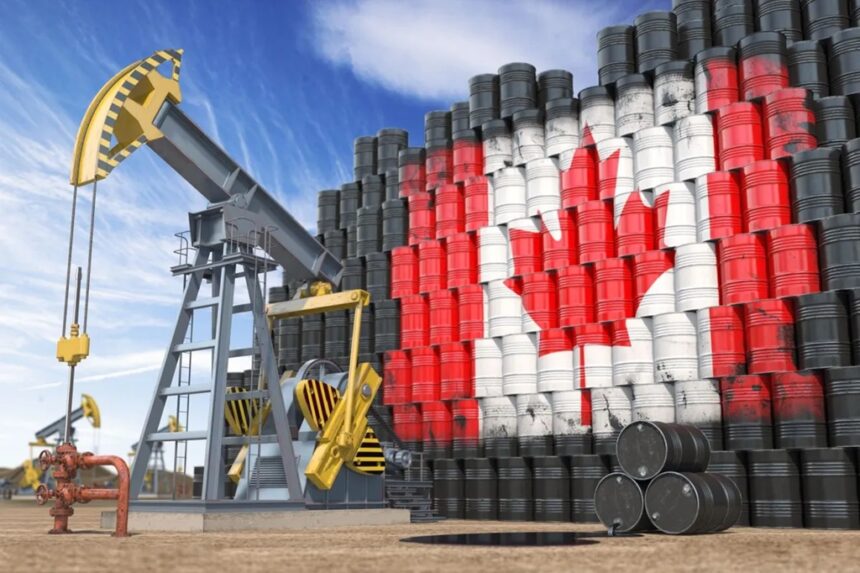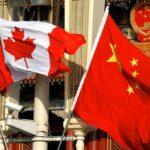Europe’s search for reliable and affordable energy hasn’t let up since the Russia-Ukraine conflict changed everything in early 2022. With Russian gas now just a small piece of the mix, the continent faces tight supplies, high prices, and intense competition for alternatives.
Everyone’s looking for new partners who can provide steady energy without political drama.
Canada has the resources and stability Europe needs right now. The country boasts vast reserves of natural gas, oil, and minerals, along with strong commitments to clean technology. As European leaders rethink how and where they get their energy, Canada stands out as a safe, responsible source that can help bring much-needed relief to the crisis. In this post, we’ll look at how Canada’s world-class supplies could make a real difference for Europe’s future.
Europe’s Energy Crisis: Causes, Impact, and the Urgent Need for New Partners
Russia’s war in Ukraine sent a shockwave through Europe’s energy market. Many countries suddenly faced the reality that their gas, heating, and energy security relied on a single, unpredictable supplier. With prices spiking and supplies tight, daily life and business costs soared. This crisis showed why energy can’t be taken for granted—and why Europe is racing to rethink who it trusts and how it powers homes and industry.
How Europe Became Vulnerable: Lessons from the Russian Gas Crisis
Europe’s dependence on Russian gas was deep, built over decades of political deals and infrastructure linking the two regions. Russia supplied up to 40% of the EU’s natural gas before the invasion of Ukraine in 2022, making it the single biggest source. When Russia cut off supplies, many European countries were caught unprepared, highlighting a risky over-reliance on one partner.
Looking back, this vulnerability came from a mix of limited domestic production, slow investment in alternatives, and the slow phase-out of coal and nuclear. Even as demand for gas grew, many governments hesitated to invest in new sources or keep backup options available. When the crisis hit, there was little flexibility built into the system, forcing governments to scramble for new sources and emergency solutions.
Key factors driving Europe’s vulnerability:
- High reliance on Russian pipelines, with limited LNG import options.
- Years of underinvestment in local fossil fuel and nuclear energy.
- Slow growth in renewables, which couldn’t yet fill the gap.
- Strong demand from industry and winter heating needs.
The lesson is clear: energy diversity matters, and so does the choice of partners.
The Economic and Social Toll of Soaring Energy Prices
When the crisis hit, the impact was immediate and widespread. Energy costs soared. Families saw home heating bills double or triple in a single year. Small businesses struggled to keep the lights on, while manufacturers faced huge increases in production costs. This put the brakes on Europe’s economic recovery just as it was bouncing back from the pandemic.
According to the IMF, inflation surged as energy became a major driver of costs for goods and services. Industries that rely on steady, affordable energy, such as chemicals, glass, and steel, were forced to consider moving operations elsewhere, risking jobs and growth. Some governments scrambled to offer bill relief and subsidies, but these quick fixes strained public finances and failed to keep up with the speed of the crisis.
Key effects included:
- Rising living costs that hit low- and middle-income families hardest.
- Industrial slowdowns and closures, worsening supply shortages.
- Social protests and public pressure, especially during winter.
- Strained government budgets due to emergency energy and income supports.
Find more insights and stats on the macroeconomic shock in the IMF’s report on beating the European energy crisis.
Europe’s Policy Response: Diversification, Renewables, and LNG Expansion
Europe didn’t stand still. Leaders quickly rolled out emergency laws and a long-term rethink of how the continent should power itself. Three big shifts are underway:
- Diversification of Supply: Europe started importing more gas from Norway, North Africa, and the United States, especially liquefied natural gas (LNG) shipped by sea. This was crucial to plug the gap left by Russian pipelines. The U.S., for example, emerged as a major LNG supplier, helping fill the void while Europe built new terminals and storage.
- Accelerated Renewables: Investments in wind, solar, and green hydrogen have jumped across the continent. The EU set bolder targets to cut fossil fuel use and boost clean power production, aiming to limit risks from imported energy.
- LNG Infrastructure Rapid Build-Out: Dozens of new LNG terminals and pipelines were fast-tracked. Germany brought new terminals online in record time, moving away from its old model of over-reliance on one supplier.
Emergency measures included joint gas buying plans, price caps, and new storage requirements. The European Commission laid out action plans for both immediate relief and long-term energy independence, detailed in their official summary.
Despite this progress, Europe’s energy system is still in transition. The need for reliable, affordable partners remains urgent, creating opportunities for stable, well-resourced allies like Canada to play a larger role.
Canada’s Resource Wealth: Oil, Gas, Uranium, Critical Minerals and Clean Technology
Canada’s vast landscape hides incredible treasures that many in Europe may not fully realise. From the oil sands in Alberta to the uranium-rich rocks of Saskatchewan and Newfoundland’s storehouse of critical minerals, Canada stands ready to offer what Europe needs most: energy security with a green focus. This isn’t just about barrels, tonnes, or pipelines—it’s about trust, partnership, and a shared commitment to stability and environmental responsibility. Let’s break down why Canada is shaping up to be a solution for Europe’s immediate needs and long-term ambitions.
Oil and Gas: Canada’s Undervalued Global Role and Export Readiness
Canada holds one of the largest proven oil reserves worldwide—about 168 billion barrels, with most of that in the oil sands. The country ranks among the top five oil producers on the planet, and its natural gas reserves are just as impressive. While often seen as a supplier to the United States, Canada has quietly built an export infrastructure that’s ready to serve new partners, including Europe.
Key facts about Canada’s oil and gas sector:
- Pipeline power: A vast network of pipelines and terminals stretches across the country. These routes carry oil and natural gas not only to U.S. refineries but also to global shipping terminals.
- LNG growth: Canada is ramping up its liquefied natural gas (LNG) production, with new terminals opening in British Columbia. This means Canadian gas can be shipped overseas, giving Europe a new, reliable supplier.
- Environmental standards: Canadian producers face some of the toughest regulations for emissions and land use. Their focus on lowering greenhouse gases and supporting Indigenous communities is setting a high bar for ethical energy.
Fortune hasn’t always favoured Canadian energy exports to Europe—politics and infrastructure bottlenecks have slowed things down in the past. But with Europe urgently seeking reliable suppliers, and Canadian terminals increasing LNG capacity, now is Canada’s time to step up. For a closer look at Canada’s oil and gas reserves and export capacity, see the Canadian Oil and Gas Export Infrastructure report and this industry overview.
Uranium and Nuclear Power: Breaking Russia and China’s Monopoly
Europe’s effort to cut dependence on Russian nuclear fuel is hitting fresh urgency, especially as nuclear power remains a key low-carbon energy source. Canada stands tall in the uranium world, second only to Kazakhstan in global production.
What makes Canada’s uranium unique?
- High grade: Some Canadian deposits are a hundred times richer than the global average.
- Big exporter: About 85% of Canada’s uranium is exported, mostly to Europe and Asia.
- Trusted origin: Unlike competitors in Russia or China, Canada operates under a transparent, democratic regulatory system—Europe knows what it’s getting, from the mine to the reactor.
Canadian uranium doesn’t just fill a fuel gap—it helps Europe push back against the market hold Russia has built up for decades. Canada’s CANDU reactor technology also gives countries more flexibility, since it doesn’t require weapons-grade enriched uranium. For more, explore up-to-date coverage on Uranium in Canada and global profiles of Canada’s uranium sector.
Critical Minerals and Clean Hydrogen: Securing the Supply Chain for Europe’s Energy Transition
The move to electric cars, wind turbines, and battery storage has put a spotlight on critical minerals like lithium, nickel, cobalt, and copper. These minerals are essential, but supply chains are tight—and too often controlled by a handful of non-democratic countries.
Canada is changing that with:
- A modern strategy: The government’s Critical Minerals Strategy is backed by billions in public investment to speed up exploration and sustainable production for 31 minerals, including rare earths.
- Production power: In 2022 alone, Canada produced $8 billion worth of critical minerals. By 2040, that number could jump dramatically as new mines open and processing grows.
- Clean hydrogen leadership: Canada isn’t just digging up metals. The country is also developing large-scale clean hydrogen projects on both coasts, with export-ready infrastructure aimed at Europe. This is key for European plans to phase out fossil fuels while keeping the lights on.
In this supply chain race, Canada stands as a secure bulwark for Europe. The country has the resources, the know-how, and the democratic rules to stand apart from the global scramble. Get more on Canada’s critical minerals potential and its impact on the clean energy shift from the Canadian Critical Minerals Strategy and analysis from Canada’s clean energy transition and critical minerals.
With its abundant reserves, ethical standards, and push toward cleaner technology, Canada is a trustworthy partner offering Europe the lifeline it needs today and in the decades to come.
Opportunities and Hurdles: What It Will Take for Canada to Become Europe’s Go-To Energy Supplier
Canada is sitting on a treasure chest of energy resources. Many see the country as a natural answer to Europe’s ongoing energy headaches. But translating potential into reality isn’t a simple swap. Big ambitions face old bottlenecks, cross-Atlantic politics, and a need for faster progress on major projects. The path to becoming Europe’s reliable energy backstop will run through ports, boardrooms, and government offices—and Canada will need to juggle growth, green goals, and complex partnerships every step of the way.
Infrastructure and Red Tape: The Challenge of Scaling Up Exports
Canada’s natural resources draw plenty of attention, but much of that energy is landlocked by geography and regulation. The biggest roadblock? Getting oil, gas, and minerals from inland deposits to European buyers is often easier said than done.
Canada’s energy exports rely on a patchwork of pipelines, rail links, and ports, many of which were never designed for large-scale overseas trade. Coastal bottlenecks are real, especially with much of the infrastructure built for US trade, not for shipping to Europe. New east or west coast terminals, like those in British Columbia, remain in development.
But logistics aren’t the only problem. Regulatory and political hurdles can slow or stall progress:
- Multiple approvals for new projects stretch timelines into decades.
- Provincial and federal governments debate over jurisdiction.
- Indigenous rights and environmental reviews demand careful attention, and rightly so.
Take LNG, for example: Canada expects its first major LNG export terminal, LNG Canada in Kitimat, BC, to launch its first shipments by mid-2025. This project is finally nearing the finish line, with construction over 95% complete and the promise of regular shipments to Asia and potentially Europe soon after. Updates on this progress show how slow and costly it is to break through Canada’s export gridlock (see the LNG Canada project overview; LNG Canada 2024 construction update).
Canada will need billions more in investment for new terminals, pipelines, and technology if exports to Europe are to compete with US and Middle Eastern supplies. The path forward depends on cutting red tape, speeding up project reviews, and working closely with Indigenous nations who hold the key to both access and local support.
Canada-EU Energy Partnerships: Agreements, Alliances, and Market Opportunities
Canada and Europe already share a long economic and political friendship, but energy trade is about to test those ties. The European Union’s urgent push for cleaner, more reliable energy has brought both regions to the table for new partnerships.
Recent years saw a wave of cooperation: joint statements, memoranda, and working groups all promise more direct trade on gas, hydrogen, critical minerals, and clean tech. But moving from intentions to real shipments will take strong, ongoing policy alignment. The EU’s climate goals—net zero by 2050 and carbon pricing—are driving markets toward lower-carbon energy and traceable supply chains.
Key opportunities for deeper Canada-EU cooperation include:
- Building joint investments in major projects that guarantee a secure supply.
- Harmonising environmental rules to allow Canadian producers a clear path to European buyers.
- Forming alliances for hydrogen production and trade, aiming for regular exports from Canada’s east coast in the next few years.
There’s opportunity for Canadian companies to tap into the EU’s hunger for clean hydrogen, advanced nuclear fuel, and zero-emission technology (analysis: The EU needs raw materials. Canada has them). Canadian hydrogen export plans, especially to Germany and the Netherlands, are picking up speed, with pilot shipments and new deals being announced each quarter. Business councils and industry groups argue that fast action here could unlock an export boom as Europe races toward its net-zero targets (see recent export potential reports).
Innovation and Sustainability: Canada’s Path to Global Energy Leadership
Meeting Europe’s needs isn’t just about shipping more cargo. Canada is facing fierce competition from established suppliers and must stand out with cleaner, smarter, more reliable energy offerings. This will mean not only ramping up output but also proving that Canadian energy is greener and more traceable than global rivals.
Innovation is now tied directly to export success. Canada leads with some of the world’s strictest environmental standards, especially on methane reductions and land reclamation. The country is also banking on carbon capture, clean hydrogen, and tech-driven mining to address climate concerns and appeal to Europe’s clean-energy priorities.
Some areas where innovation and sustainability are converging:
- Major investments in carbon capture and storage at oil sands operations.
- Direct support for new hydrogen export hubs, especially in Atlantic Canada.
- A national strategy for critical minerals, attracting billions in new mine development and processing so Canada can supply battery minerals and rare earths to European automakers (Canadian Critical Minerals Strategy; report on new strategy progress).
Canada’s energy companies and governments are working not only to ship more fuel but to guarantee that every shipment meets the growing call for sustainability. The winners in this new race for energy leadership will be those who can balance faster delivery with trust, low emissions, and environmental stewardship, with Canada ready to prove it can deliver all three.
Conclusion
Unlocking Canada’s resource potential matters to both Canadians and Europeans. For Canada, this is a chance to turn abundant natural wealth and expertise—oil, gas, uranium, and critical minerals—into real prosperity and industry growth. For Europe, a stable Canadian supply means steady energy, less risk of shortages, and better odds for a balanced market as renewables ramp up.
Europe’s energy transition needs partners who can deliver secure, low-emission fuels and the minerals for tomorrow’s technology. If Canada acts now, it strengthens trade, creates jobs, and helps Europe move forward on climate goals and security.
Canada can’t let this window close. Now is the time to build strong links with Europe, speed up smart infrastructure projects, and show the world what responsible resource leadership looks like. If you care about Canada’s future or want to see Europe thrive, speak up and support action on this urgent opportunity.
Trending News:
Canada Ramps Up Data Centre Investments as Global AI Demands Soar








